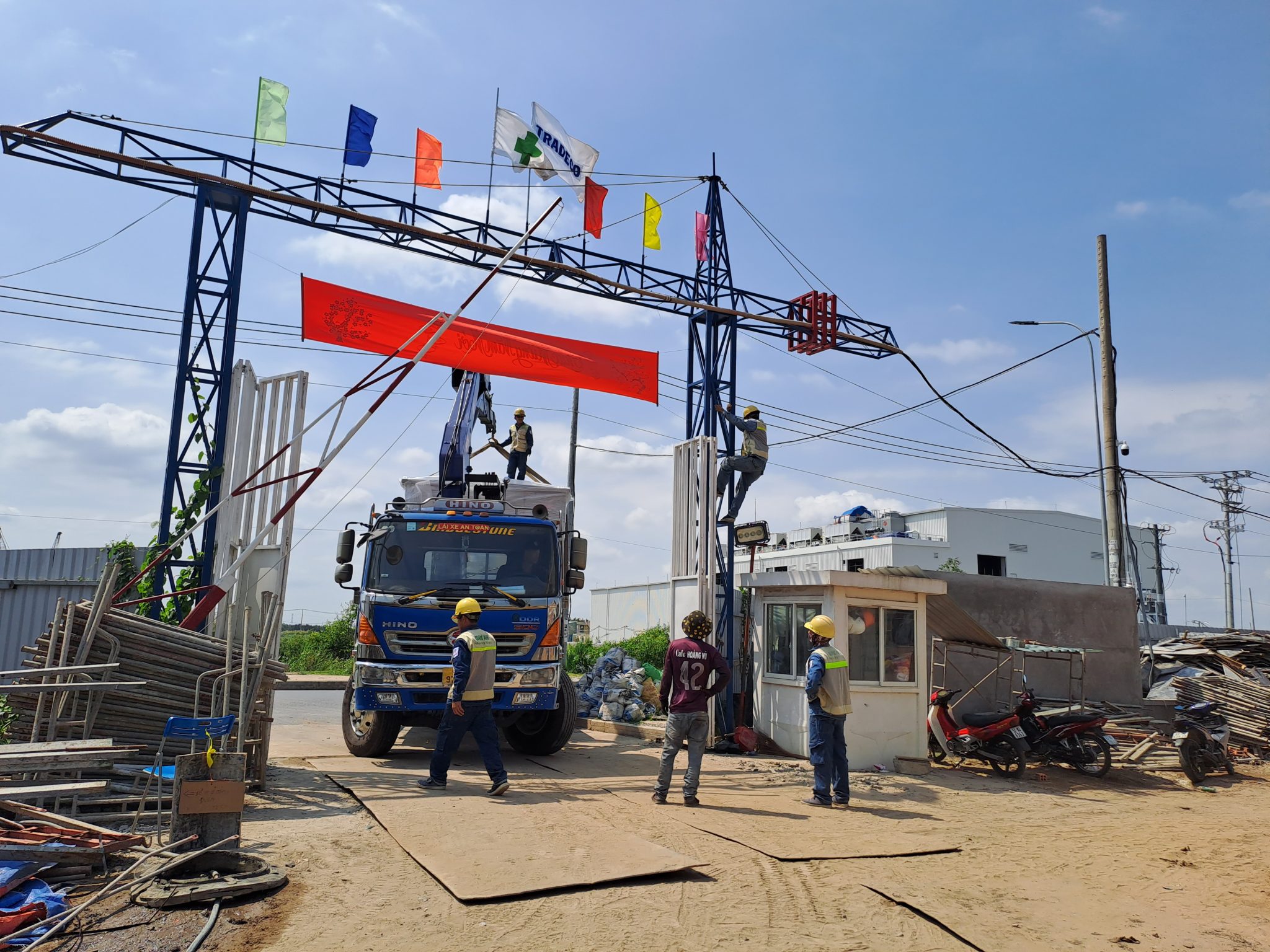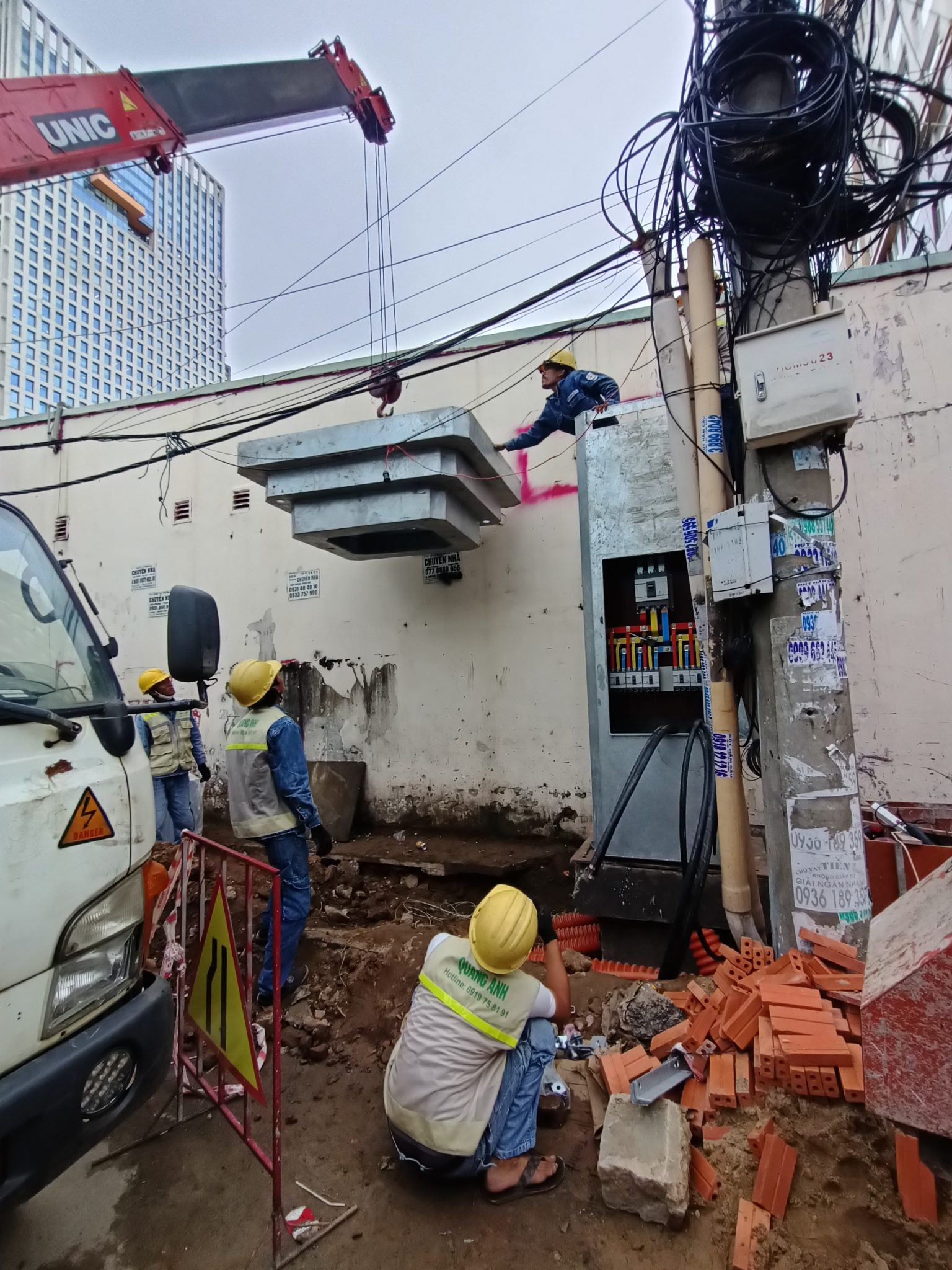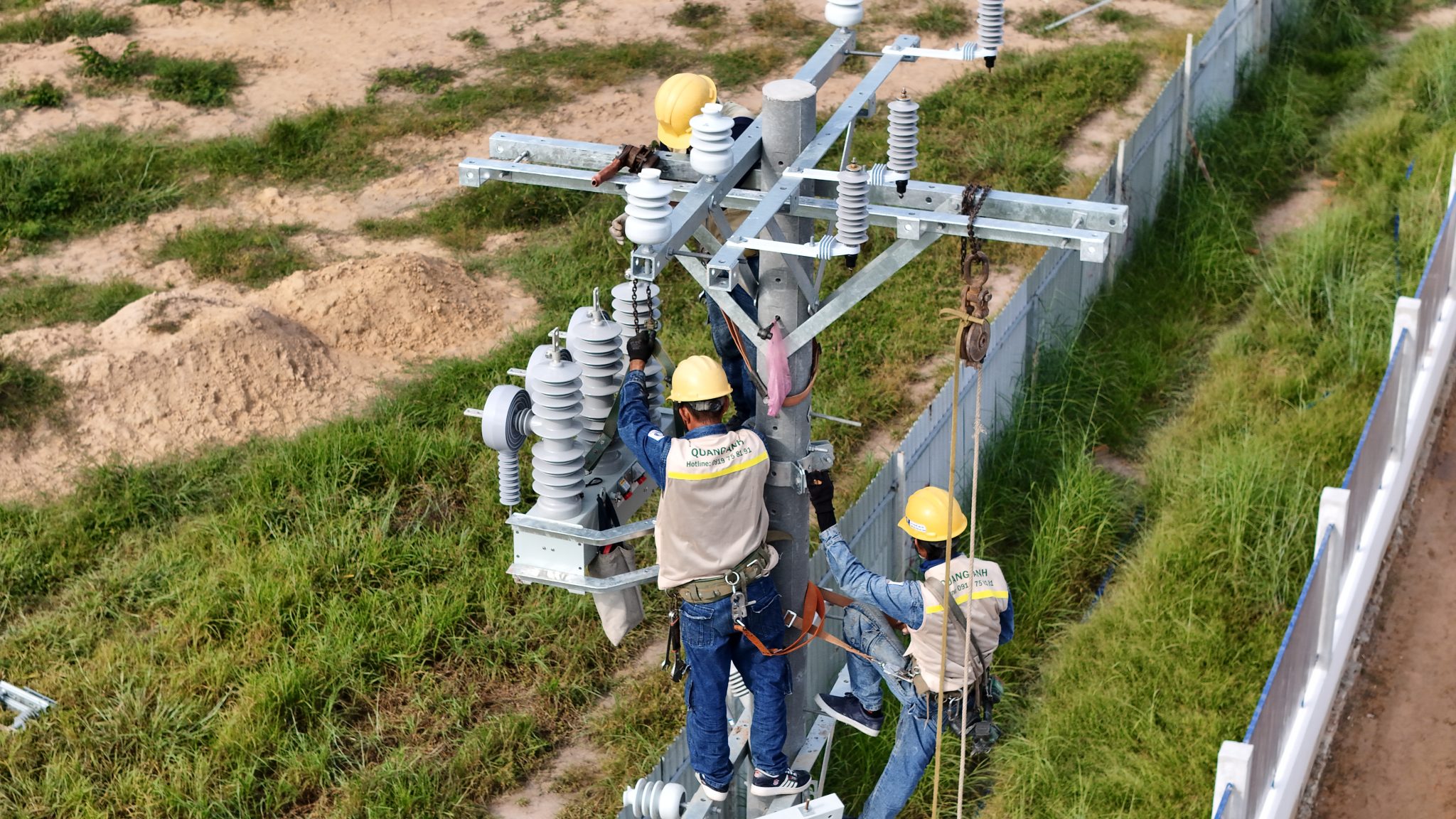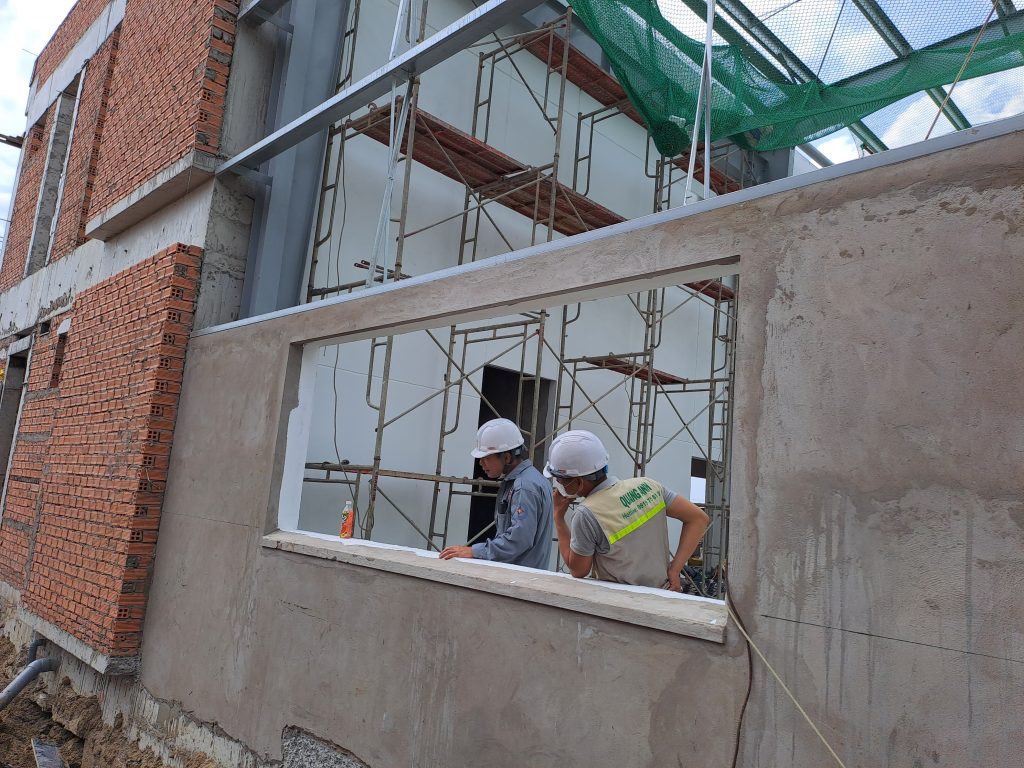News
Factory Electrical System: Components, Specifications, and Design
The factory electrical system supplies and distributes energy to production equipment. It includes transformer stations, electrical cabinets, and lighting systems, ensuring efficient and safe operation.
Components of the factory electrical system
The factory electrical system consists of several key components such as transformer stations, medium and low voltage cabinets, and backup generators. Transformer stations convert voltage, usually three-phase 380V, to suit production needs. Medium and low voltage cabinets distribute electricity to different areas within the factory. Backup generators and automatic transfer switches ensure continuous power supply when the grid encounters issues or interruptions. This structure ensures performance and safety for production activities.
The factory electrical system is complexly designed to meet large power demands and ensure safety and stability during production. The first major component of this system is the heavy electrical system, responsible for providing motor power to production machines.
Heavy Electrical System
-
Transformer Stations and Medium/Low Voltage Cabinets
-
Transformer stations convert from the national grid supply voltage, usually 22kV or 35kV, down to 380V or 220V suitable for factory needs.
-
The medium/low voltage cabinets distribute electricity to different areas and ensure safe isolation.
-
Generators and Automatic Transfer Switches (ATS)
-
Generators act as backups when power outages occur from the grid, with the generator’s capacity depending on the scale of the factory.
-
Automatic Transfer Switches (ATS) switch the power source from the grid to generators within a very short time, only 10-15 seconds.
-
Main Distribution Board (MSB/DB)
-
The main switchboard (MSB) is an intermediary point receiving power from the transformer station and distributing it to branch cabinets (DB), supplying power to production lines or machine groups.
Light Electrical System
This system includes control devices like PLC/SCADA to automate and monitor production processes. Additionally, there are sensors and measuring systems to monitor temperature, current, and voltage to detect faults early.
Lighting System
Industrial lighting systems, such as high-power LED lights, provide economic efficiency with durability up to 50,000–100,000 hours, helping create an optimal working environment.
Design and Installation Process
The load calculation process must determine the maximum total power consumption to select suitable conductors and CBs, ensuring high and low voltage network calculations, using overload-protected XLPE cables and lightning protection systems.
Safety Requirements
Comply with IEC/TCVN standards, choose devices with IP54/IP65 dust and water resistance. Grounding systems require a resistance of ≤4Ω, combined with grounding rods.
Modernization Trends
Update trends by installing inverters to reduce energy consumption for motors by 20–30% and use smart monitoring systems with IoT to alert faults via phone.

Common technical specifications of the factory electrical system.
The factory electrical system uses three-phase electricity with a 380V voltage, common for production machines. The system design must comply with industrial electrical safety standards, ensuring isolation of people and electrical equipment, avoiding electrical shock and fire hazards. In addition to protective devices and automatic cutoff systems, the system can be expanded and upgraded according to production needs. These are the technical factors that optimize performance and ensure factory safety.
The factory electrical system is a fundamental foundation for all production and business activities of an enterprise. To achieve high efficiency and ensure safety, the design of the electrical system must comply with technical and safety standards. Key characteristics include:
-
Design and Construction: The design of the electrical system must meet electrical safety standards to avoid fire and electric shock hazards. Using high-performance equipment helps save energy and optimize operations.
-
Important Components:
-
Transformer Stations: These are crucial components for voltage conversion to suit factory needs. Equipment like those from ABB and Schneider are often chosen for their high reliability.
-
Factory Electrical Cabinets: Including medium and low voltage cabinets, factory electrical cabinets distribute electricity safely, using protection and circuit-breaking devices from manufacturers like LS, Eaton.
-
Cable System and Cable Trays: Electrical cables from Cadivi and Schneider help transmit electricity from the transformer station to various areas. Cable trays ensure the fixation and protection of this electrical cable system.
-
Backup Equipment and Switches: Generators and automatic transfer switches are two indispensable backup devices, ensuring that electricity supply is not interrupted. Products from Mitsubishi and Schneider can meet these requirements well.
-
Electrical System Drawings: It is essential to have precise calculations and representation through technical drawings to ensure safety and optimize the use of electricity. Drawings must clearly show the positions and connections between components in the system.
The use of the factory electrical system requires not only accuracy in design and construction but also the selection of components and equipment from reputable manufacturers to ensure long-term efficiency and safety.

Design process of the factory electrical system
The design of the factory electrical system starts with determining the required electrical load for the entire production area. Next is the design of high and low voltage networks. An important step is to create wiring diagrams and layout electrical equipment, cabinets, and lighting systems. After completing the design, conduct safety checks, ensuring compliance with technical standards. Finally, proceed with construction, installation, and system testing to ensure stable operation.
-
Site Survey and Load Determination
- Survey: An essential part of industrial electrical design, surveying helps gather detailed information about the electrical installation area, factory scale, and specific customer requirements.
- Load determination: This is the foundational step for the entire factory electrical system, calculating the total power consumption of devices and machines operating simultaneously.
-
High Voltage Network Design
- High voltage network design: Determine the placement of high voltage poles, plan the most efficient and safest way to run electrical wires into the factory.
- System layout: It is important to layout to ensure safe distances between power lines, preventing electrical safety risks.
-
Low Voltage Network Design
- Low voltage network design: Choose and flexibly layout electrical cabinets, ensure less than 1kV voltage and safe connections.
- Safety distance: Special attention should be paid to maintaining necessary distances between high and low voltage networks.
-
Lighting System Design
- Lighting standards: Required to meet important technical standards concerning glare, light direction, and color temperature.
- Reasonable installation: Determine the reasonable number and position of lights to ensure adequate lighting while saving energy.
-
Reactive Power Compensation Design
- Reactive power compensation design: Choose devices like capacitors to reduce energy loss and improve electrical network efficiency.
-
Design Considerations
- Electrical safety: The system must fully comply with technical safety standards to prevent accidents during operation.
- Energy efficiency: Design with the goal of optimizing energy use, reducing costs, and enhancing working efficiency.

Factory electrical system is designed to provide stable and safe power, supporting production efficiency. Investing in an advanced system helps businesses increase productivity and ensure labor safety.
Contact QuangAnhcons now via Hotline: +84 9 1975 8191 for professional and efficient factory electrical system consultancy.
QuangAnhcons specializes in providing consultancy, design, and installation services for factory electrical systems, ensuring safety and efficiency for your production operations.

 Tiếng Việt
Tiếng Việt 简体中文
简体中文 Deutsch
Deutsch 日本語
日本語 한국어
한국어 ไทย
ไทย Русский
Русский Français
Français
